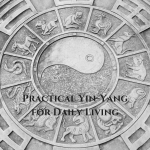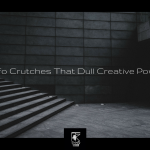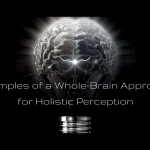Whether you’re in a professional environment or personal sphere, seeing clearly when “shit hits the fan” will enable you make optimal decisions.
You see, I don’t believe in the concept of just freaking out. As a gentleman and professional, I don’t “lose my mind,” lose my temper or go out of control. I don’t succumb to fits of rage. Why? Because losing my mind would imply I am not an author of my experience. I’ve chosen in some form to give up personal agency and allow external circumstances to dictate how I respond. This is not co-creation, it’s giving up self-responsibility.
There will be many times when we do not have all of the information to make a decision, but it still has to be made. The more moving parts in a decision, the greater the risk to have those parts affected positively or negatively. If you employ people, they count on you to keep a cool, collected head. If you work within a team at a job, those members will count on you to be focused and contribute top grade. If you’re working towards any kind of creation, manifesting it requires the combo of energy, intent and will-physical action. What good is an unchecked temper in this arena?
The greater the responsibility we have, the more resources we must marshal, and the more resources we require to accomplish the goal.
So, if your aim is to be a person who makes efficient decisions, losing your mind is not an option. To wear the crown of mind is to have a clear mind. An intuitive mind.
Over the years I’ve inherently developed mental technologies that enabled me to think faster, more accurate and with razor-sharp wit. With consistent practice in actual performance environments (job, training, etc.), I’ve put these technologies to work which, either from a natural disposition I have or from learning elsewhere, support my efficiency. Given all things equal, I tend to generate creative ideas faster, spark more originality and have several claircognizant messages per day. All of this is done without stressing out or having to run away to isolation. I remain in what I consider a “waking meditative” state despite chaos around me.
Before I delve into some of these technologies, you should have the disclaimer: results will be different for everyone because we’re holistic beings. What you do and who you expose yourself to daily will also influence your results. Other factors influencing your results include:
- Diet (I’ve incorporated super foods and plant medicine into my diet for years)
- Fitness (I’ve been martial arts training for over 20 years)
- Lifestyle (My energy is invested in work, creative projects, personal mastery, social relationships and functions, family, activities; I don’t have experiences “just for the hell of it”)
- Spiritual Development (Also active in this area for over 16 years)
- Native Talent (This is your natural aptitude, spiritual endowment, the age of your soul, the cards you were dealt with)
Ready?
Mind Map.
This technique was likely around a lot longer than the man who coined the term, Tony Buzan. A mind map is a learning strategy that helps you connect many ideas by association. Instead of writing long sentences to memorize information, a map can be drawn in a creative way using just basic keywords. One word can lead you to remember the next word. And if you don’t remember, it challenges you to make the connection. Use colors, choose images instead of words if you’d like.
Example – One word can be “green” and the next word on the map can be “storms.” So, based on what you learned, you can make the connection. Or even without a specific connect, you can create one: when the storm comes, it’s going to rain down plenty of water to nourish all the green plant life in the area. Or: both storms and green relate to nature as a whole.
Multidimensional Thought.
This is being able to think of many ideas, not simultaneously, but capable of understanding them at deep levels. Multidimensional thought differs from shallow or linear thought. An A-B-C approach is replaced with an A-A2-A3-A4 approach. With this skill, you can see an idea’s layers. You can rotate the subject, tear it apart, challenge yourself to disagree with it, put it back together and add to it. This is the Japanese Shugyo learning style of deep, rigorous study on a single subject compared to the western approach of learning many skills at a surface level, the “jack of all trades.”
An exercise to train your Shugyo learning is to choose an object and ask yourself how many ways you can use it. The sock is a common choice. Obviously designed to be worn on the foot (that’s the linear thought), allow your mind to consider the many unorthodox ways you could put the sock to use.
Imagining the item outside its normal boundaries, tearing up the concept it’s normally associated with, and reintroducing it into the reality with new purposes can only do this.
Another exercise is to choose an object and study it with concentration. Find a candle, light it and sit quietly studying the nature of the fire. Ask yourself questions. How small is it? What color? How does it sway with the wind? Can you feel its heat? Does it affect your eyes? Can you smell the candle’s scent? What do you envision from that smell? Where did the candle come from? How was it made?
With enough practice, you’ll be able to take any idea or situation and peer into its nature. To consider the possibilities, to understand the factors involved. And you’ll do it without distress.
Question Before Criticism.
This may be a most difficult skill for some. It seems our tendency is to criticize something we disagree with or don’t understand before trying to understand it. Imagine a time when you heard or read something you felt you needed to correct. Whether you’re right or wrong about it is a different issue. The feeling might’ve been visceral, a punch to the gut, body temperature rising, eyes flaring. You felt moved to some action to “right the wrong.” Some self-expression had to be released. More likely than not those feelings came from your drive to criticize rather than understand.
What questioning does is open your mind to possibilities for deeper understanding. A question throws your mind out of impulsive action. It prompts contemplation. And since questions and answers can arrive at the same time (but not always recognized), we can come to conclusions about ideas if given the proper amount of time.
This skill is vital for sorting through chaos because chaos often charges people to act impulsively. Just examine any captain or leader and see how even amidst a crisis, there’s still a need to gather information from advisors about the situation. This intel is needed to assess the next strategic moves.
Especially when your locus of control is external, you might not feel like you have a grasp of the situation, and the only way to control it is to lash out. But if instead of lashing out you asked questions first, your situational vision will be clearer.
Enter Experience with An Open Mind.
This connects to asking questions, a side effect perhaps. With time, your mind will develop the habit of seeing situations as open landscapes, paintings with no paint laid upon the canvas until your perception begins forming the blend.
Professionals involved in repetitive-type roles like sales or customer service may find this most challenging. After several negative experiences, a less resilient person might project their past onto the new customer or client. With the canvas already painted, she treats the new relationship like the old, assuming past expectations will also manifest in the new. And because we create our reality, that’s exactly what happens.
“But wait, Mr. Know-it-all,” you say, “didn’t you just talk about multidimensional thinking? How can we be multidimensional and have an open mind at the same time?”
This is why this post is called mind skills. The idea is to be able activate and deactivate these skills when necessary. When I need immediate action, I don’t have time for full analysis, yet I need to act. So my instincts and intuition is captain. When I do have time, I perform the multidimensional thinking in combination with my instincts and intuition.
The idea is: destroy the either-or thinking. They’re all important at different times, and intuition is important all of the time.
Work a Plan Backwards.
This technique can help you become more specific with goals. Create the most detailed vision of your plan in its final state. What does it look like? Who are the people involved? What materials are you using? What resources do you need? When is it complete? Where did you have to go for it? What are you doing?
Once you feel you have enough detail, take each, one at a time, and ask yourself what you need to do to make that part happen. Do enough of this and you’ll have a rather large map of tasks to complete. Small, baby steps towards achieving the goal.
Understand without Agreement.
Can you learn about something without having to agree with it, or do you shun any idea you disagree with?
I find this habit of negating anything we disagree with to be an enemy of learning. Firstly, to know why we disagree with something, is it not important to understand it? How can you decide you disagree with something you’re ignorant about? This just projects one’s own ignorance.
My challenge to you for this is to actually invest time in learning about the subjects you don’t agree with. Understand it. See the angles you find to be most disagreeable. If your truth is truly truth, it will withstand this opposition. And you’ll have added stronger resolve for your knowledge, not to mention add another layer of thought to your knowledge.
What you also may notice (as I do) is in conversation, when you show you understand a point of view, the other person will assume you agree with them. But understanding doesn’t equal agreement. It’s just your ability to see the idea from vast perspectives. We should be able to sit in a room with someone of differing view, understand why we don’t agree (because we learned) and not attempt to kill each other over those differences. Be capable of agreeing to disagree.
Visualization.
This common term really refers to your power of imagination. To visual-ize is to design images in your mind. That your body doesn’t know the difference between what you see with the physical eyes or mind’s eye indicates both are real; they both have influence in your experience.
This requires no special technique aside from eliminating the mental program that tells you your imagination is just a toy that makes fictions. Everything we’ve created with matter results from the imagination, so it is not a toy that creates fictions. Just this shift alone will inspire you to take your visions more seriously.
Play with it. Allow your mind to wander. Where do you usually go? What do you see? Do you talk to people?
With enough practice, you can project possibilities before they materialize. In chaotic situations, your mind can speedily look at probabilities without having to physically act them out. If the imagination is sourced in a separate mental realm, we could say you’re shifting through destinies that just haven’t manifested yet. And depending on the actions you take, you collapse (focus on a single reality) a specific path into existence.
Chaotic Clarity
With these 7 skills you’ll cultivate a mind that can form order out of chaos in your jobs and personal lives. The irony is, this is how the relationship has to be. Chaos is unfiltered, free, disorganized, wild, the dark matter, the formless energy (feminine principle) while clarity is discipline, targeted, forward-moving, active, firm and organizing (masculine principle). Both exist in relationship in nature and show up in various ways in our lives.







[…] the fastest ways for a man to lose the feminine’s respect, and from people in general is to lose composure. Other phrases for this expression […]
[…] Stretch. This loosens the muscles, increases bodily heat and blood flow. Can increase relaxation and peace of mind. […]
[…] I challenge you to think not one vs. the other, but how both can exist in their optimal element. Logic has its place and so does emotion. Rationality doesn’t nullify intuition; they can coexist for superior cognitive ability. […]